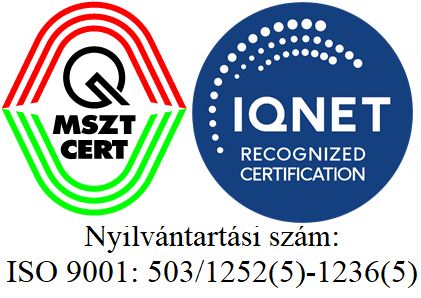Press release
2004.12.06
The new integrated safeguards system of the International Atomic Energy Agency (IAEA) is being applied in Hungary officially from 15 November 2004. Hungary is the first EU member state where the new inspection regime entered into force. To enforce the implementation of the Treaty on the Non-Proliferation of Nuclear Weapons, Hungary has placed its nuclear activities under international control and concluded an agreement with the International Atomic Energy Agency (IAEA) in 1970 for the application of safeguards. Following the discovery of clandestine nuclear programs in certain countries under the IAEA safeguards inspection regime, the further strengthening of the effectiveness and the efficiency of the system became necessary. To this end an Additional Protocol to the Safeguards Agreement has been prepared. It provides the IAEA with new legal and technical instruments which help to reduce the possibility of any undeclared nuclear activities. In one hand the new system requires even more detailed information on nuclear materials and information should also be provided on nuclear related activities not involving nuclear material, including research and development. On the other hand IAEA inspectors should be granted access to more facilities than before and they have the right to analyze satellite images and collect and analyze environmental samples searching for traces of nuclear material. These new techniques make it more difficult to operate clandestine facilities and have undeclared materials and activities unnoticed. In exchange for using the new powerful techniques, the frequency of on-site inspections can be decreased while at the same time the efficiency and reliability of the safeguards system is increased. It is expected that under the new system which integrates the nuclear material control measures with the new tools, the expenses of the international inspections can be considerably decreased. The new system will also reduce the burden on the Hungarian nuclear facilities, especially on the Paks NPP. Hungary was among the first countries to conclude and implement the Additional Protocol in 2000. After careful analysis and verification of Hungary’s declaration, in early 2003 the IAEA was able to draw its conclusion on the absence of undeclared nuclear materials and activities in Hungary, providing assurance to the international community that Hungary fulfills its obligations in the field of non-proliferation of nuclear weapons and uses nuclear materials and technology exclusively for peaceful purposes. This conclusion was the prerequisite for the implementation of the new integrated safeguards system in Hungary. In connection with the implementation of the new system the Hungarian Atomic Energy Authority and the IAEA organized a three day workshop in Budapest to inform the participants from 12 countries of the European Union about the details of the new integrated safeguards system. Hungary was chosen as the venue of the meeting in order to give the chance to the experts of the HAEA to speak about their experience on the implementation of the new system and the participants could see the system in practice in the Budapest Research Reactor and the Paks Nuclear Power Plant.



 ©HAEA - All rights reserved
©HAEA - All rights reserved